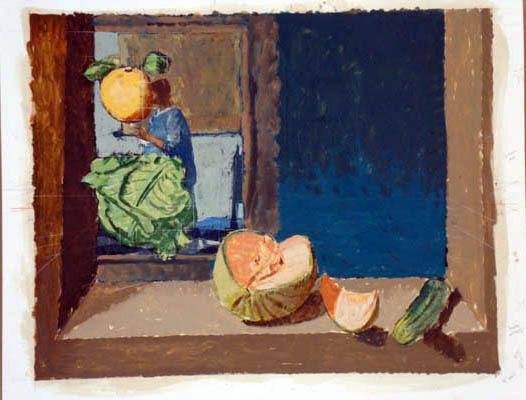GEORGE DEEM
b. 1932 - d. 2008 / American
The artist George Deem had a unique relationship to and vision of the masterpieces of the past, especially the landmarks of Western painting that date from the Renaissance to the modern era. As Deem himself acknowledged, his abiding interest was in the two quintessential characteristics of Western art: first, the use of oil paint as a medium; and second, the development of a convincing system of perspective. From Raphael to Ruscha, from Watteau to Whistler, from Bingham to the Bauhaus, Deem meticulously reconstructed and reinterpreted the art of the past with insight, originality, and wit … In his analysis and interpretation of works such as these, Deem made his own, important contribution to the history of art.
Between the time he arrived in New York City in 1958 and his death fifty years later, in 2008, George Deem’s work attracted the attention of prominent critics and art historians as well as that of major collectors and New York art dealers. At the same time, attempts to place Deem within the context of late twentieth-century art have had diverse results. He has been classified variously as a Pop artist, a Figurative Realist, a Deconstructionist, a Proto-Post Modernist, a Post-Modernist, and a Post-Post-Modernist. His compositions have been said to result from quotation, inspiration, paraphrasing, and incorporation; and his methodology has been described as collage, montage, and appropriation. His work has been appreciated for its humor and theatricality (Edgar Buonagurio); and he has been praised for his “polymorphous sense of play” and for eschewing “the satiric and the caustic faces of wit in favor of the winsome and gracious” (Charles Molesworth). His thematic choices have been called “free-flowing (fantasy) about the facts and fictions of art history”(Robert Rosenblum), and have been evocatively defined as “a recycled time-bending, painterly chopping-up (or more refined blending) of previous art” (James Mann). Obviously, critics and art historians have been unable to pigeon-hole George Deem into a single, simply defined topical or stylistic category.
(David B. Dearinger, George Deem: The Art of Art History, Boston: The Boston Athenaeum, 2012. 11, 32-4)


